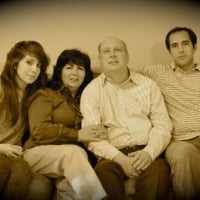Editing details
Best Answers
-
If it were me, I would add them and then do additional research to see if other records support that. I feel the chances are very good that most bibles are correct. I inherited 2 different copies of Bible records, and I researched them to death. One began in the 1830's and the other began in the 1970s. For the family group in the 1830s Bible, I know enough for a 3 generation action movie to be made.
1 -
its also nice to upload an image or transcript of the bible to FS memories
and give a little background as to the information in the bible and if you have any leanings toward believing the information may be incorrect or if it seems trustworthy.
was the information in the bible entered when the events occurred? or entered later.
More Family Bible Resources:
https://yanceyfamilygenealogy.org/family_bible_resources.htm
0 -
Like most things in life, it depends.
Not all family Bible entries are created equal: if events are added as they happen, then the details are likely to be highly accurate, but if they're added decades later based on someone's memory, then all sorts of errors can happen. And no, there's no surefire way to tell how long after an event a particular entry was made.
Another consideration is readability: it doesn't matter how soon after the event a detail was added or how accurate it is, if you can't read the writing. (Or worse, you think you can read it, but are actually getting it wrong.) Of course, this applies equally to things like church registers.
It's a judgement call. Consider everything you know about the family, and about the time and place. If the new detail fits, use it, and cite the family Bible as your source. If the conclusion would require re-writing the entire family story, try to figure out why rather than adding any new people or changing any details. If the new data is somewhere in between -- matching other sources in some respects, a bit off in others -- you have to decide based on the relative trustworthiness of the conflicting sources. The usual rule of thumb applies: the closer the entry is to the event, the more it can be trusted. (Usually.) The trick is figuring out that distance (in both time and space).
1

